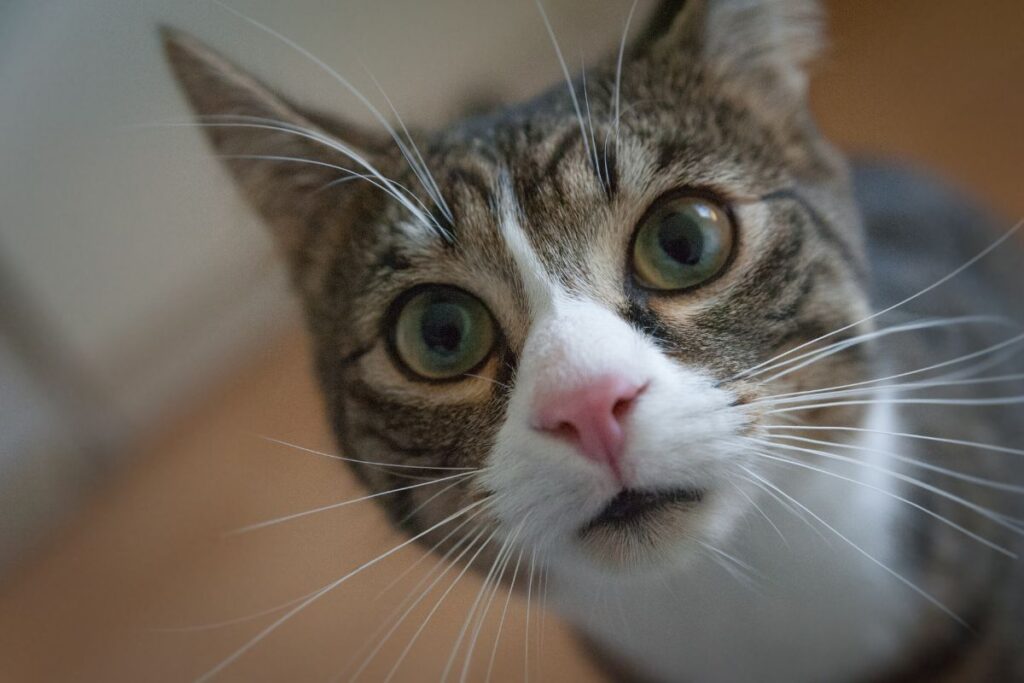In a world where we find solace in our feline friends, it’s natural for cat owners to grow curious about their pets’ intentions. With cats being notorious for both their unpredictable personalities and hunting prowess, we may often wonder if these adorable creatures consider us their next meal. So, how do you tell whether your beloved furball is plotting snack time on its owner? Let’s explore some tell-tale signs that help discern if your cat wants to eat you!
Understanding Your Cat’s Predatory Instincts
First and foremost, it’s essential to comprehend the root of your cat’s behavior – mainly, their hunting instincts. These instincts are hardwired into the DNA of every feline species. In the wild, mother cats teach their young ones how to hunt for survival, preparing them for adulthood. While our domestic cats do not require this skill set to survive, they still carry the instinctual drive of their ancestors.
Observing your cat’s predatory behaviors can provide insight into whether they consider you prey. This understanding includes distinguishing between harmless playtime and predatory aggression. For example, you might observe your cat practicing stalking, pouncing or chasing with their toys. Rest assured – such antics merely serve as outlets for ingrained instincts rather than hints of primal hunger directed towards you.
Analyzing Play Versus Attack
The line separating playful engagement from an attack lies in your cat’s body language, vocalizations, and the intensity of their actions. Positive indicators include purring, tail wagging, dilated pupils, and gentle nibbling or swatting. Contrarily, aggressive interaction entails flattened ears, hissing, growling, scratching with claws, and biting down to cause harm. While the former is a signal of fun and bonding, the latter may indicate your cat perceives you as a threat or even potential prey.
Assessing Your Cat’s Behavior and Psychology
To gauge if your kitty harbors appetite-driven intentions towards you, it’s useful to determine your feline’s mental well-being. Cats with high stress levels are likelier to display anxious and aggressive behaviors.
Socialization and Stress Reduction
Ensure that your cat receives ample opportunities for socialization and destressing to prevent accidental triggers of predatory aggression towards humans. Socializing your cat will also strengthen your bond, leading your cat to perceive you as a loving companion rather than prey.
Signs of Frustration
A frustrated cat can exhibit seemingly vicious behavior directed at their owners, but it doesn’t necessarily mean they want to eat you. Rather, your pet might be acting out in hunger, pain, illness, anxiety, or loneliness. Establishing a routine for mealtimes, healthcare management, and playtime can mitigate such issues and help maintain your cat’s positive interactions with its environment and caregivers.
Recognizing Bites and Licks: Mere Affection or Gourmet Cravings?
Why do cats bite or lick their human companions? To comprehend the complexity of feline affection, we learn that different actions bear multiple implications.
Loving Nips Versus Aggressive Bites
If a cat gently nuzzles or nips at you softly, dubbed as “love bites,” they’re showcasing affection instead of expressing hunger. However, things turn worrisome when playful nibbling evolves into painful bites – pointing to possible intimidation or provocation on your cat’s part.
Decoding Feline Grooming Behavior
In contrast, a cat licking their owner usually signifies endearment – they’re marking you as part of their family. Grooming often manifests among cats that trust each other and feel secure in their environment. When your feline licks you, they may be expressing a sense of camaraderie and ownership rather than culinary interest.
Addressing Concerns While Coexisting with Cats: A Brief Summary
- Learn to distinguish predatory behaviors from harmless playtime or bonding activities.
- Study your cat’s body language and vocalizations to understand when it perceives you as prey.
- Promote positive mental health for your cat through socialization, proper healthcare, and routine management.
- Recognize signs of frustration, affectionate bites, and grooming behaviors to determine whether your feline companion appreciates your presence or harbors sinister intentions.
In conclusion, while the possibility of your cat seeing you as an on-the-go snack can evoke distressing thoughts, the likelihood of your pet wanting to devour you is relatively low. Through understanding feline instincts and psychology, deciphering body language, and addressing potential stressors, we can foster healthy relationships with our feline friends and enjoy countless cuddles without fearing for our well-being.

